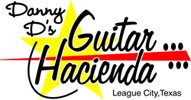|

Anatomy of a Banjo
|
|
|
|
Peghead
The top of the neck is called the peghead. This is because the tuning pegs are located in this area of the neck. At the base of the peghead you will find the "nut", a small piece of ebony/plastic that has slots in it for the banjo strings. The nut is where the strings are aligned before they travel down the fingerboard of the banjo.
|
|
Tuners
Tuners can be guitar style which stick out the sides of the neck or they can be planetary style which stick out the back of the neck. All tuners at Deering are sealed and geared to make them more stable.
|
|
|
|
Fingerboard
The fingerboard is part of the neck of a banjo. It is mounted on the top side of the neck and is made of a hard and durable wood such as ebony because the fingerboard gets the most wear during play. The frets and inlays are mounted on the fingerboard of the banjo.
|
|
Neck
The banjo neck is made of wood. The length of the neck will vary according to the type of banjo and the scale. Inlays on the front of the neck/fingerboard act as "landmarks" to help the player navigate the neck without having to count the frets during the course of play. Underneath the fingerboard of the neck is where the truss rod is located. The truss rod helps stabilize the neck and allows adjustability of the string height off of the fingerboard.
|
|
|
|
Pot Assembly
The pot assembly is composed of various parts of the banjo. It begins with the foundational rim, the banjo head, a tension hoop, hooks and nuts to provide tension on the banjo head, the tailpiece, and the bridge. On a resonator banjo it will include the flange and the resonator back. It can also include a tone ring and an armrest for playing comfort.
|
|
|
Tension Hoop
The function of the tension hoop is to keep the banjo head tight. It is pulled over the head and is tightened by a series of hooks and nuts that are adjusted until the desired tension is reached. Deering tension hoops are made of brass or steel, depending on the model.
|
|
|
Head
The banjo head is the vibrating membrane that acts as a soundboard. Deering banjo heads are crimped for greater durability. Different banjo heads can create different sounds due to the thickness of the mylar membrane, giving the banjo player further options in tone.
|
|
|
Tone Ring
The tone ring is a critical voice element for the banjo. Different types of tone ring material and construction will change the sound of your banjo. From bell bronze with its full, powerful tonal dimension, to grenadillo wood with a warm, round tone, to the brightness of steel which is crisp, dry, and sparkling. Deering offers 9 different tone rings to help customize the sound of your banjo. |
|
|
Rim
Rims serve as the pot assembly base for all the other parts of the pot assembly such as a tone ring, flange, tension hoop, banjo head, etc. Rims are usually made of wood and are also an important part of the sound of a banjo. Deering's 3-ply violin grade maple rims allow the tone ring greater ability to vibrate freely - giving the banjo a fuller, richer tone.
|
|
|
Flange
The flange serves two purposes. It isolates the pot assembly so that all the parts can ring strongly as one unit and it serves as an attachment for the resonator of the banjo by the use of thumb screws or clips as on the pop-on resonator.
|
|
Resonator
The function of the resonator or back of the banjo is to make the banjo louder by acting as a sounding board. It projects the sound that the banjo makes forward rather than have it be absorbed by the body of the player or dissipating out the back and around the rim as in an openback banjo.
|
|
|
View our selection of Deering Banjos: Click Here
|
|
|
|
|















